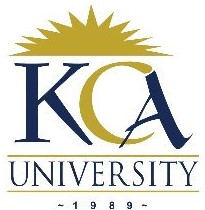 UNIVERSITY EXAMINATIONS: 2017/2018
UNIVERSITY EXAMINATIONS: 2017/2018
EXAMINATION FOR THE DEGREES OF BACHELOR OF SCIENCE IN
INFORMATION TECHNOLOGY/ APPLIED COMPUTING
BIT2209 BAC1305 RESEARCH SKILLS AND DESIGN
FULLTIME/ PART TIME/DISTANCE LEARNING
ORDINARY EXAMINATIONS
DATE: APRIL, 2018 TIME: 2 HOURS
INSTRUCTIONS: Answer Question One & ANY OTHER TWO questions.
QUESTION ONE [30 MARKS]
a) Explain your understanding of the following terms (6 Marks)
i) Research objectives
ii) Descriptive research
iii) Target population
b) State and explain SIX principles of ethics in the context of research (6 Marks)
c) Discuss FOUR ethical issues that you would consider when gathering data from human
subjects. (4Marks)
d) State and explain FOUR observation methods. (4 Marks)
e) Explain two advantages and two disadvantages of using interviews as a data collection
method (4 Marks)
e) Selecting a sample from the population is a critical step in research. Identify any THREE
factors that affect the researcher’s choice of sample size (6 Marks)
QUESTION TWO [20 MARKS]
Literature review is the systematic identification, location and review of materials related to
one’s own study. Extensive and thorough literature review is a very important exercise for any
researcher. Answer the following questions.
a) State and explain six benefits that accrue from carrying out literature review. (4 Marks)
b) Discuss briefly six sources of literature that you are likely to contact when reviewing the
literature. (6 Marks)
c) When carrying out literature review the researcher is likely to encounter lots and lots of
interesting materials but at some point, the researcher must stop reviewing the material
available and go on with the rest of the process. State and briefly explain four indicators to
quit the review of literature activity. (8 Marks)
d) Explain the difference between a reference list and a bibliography. (2 Marks)
QUESTION THREE [20 MARKS]
The following are the scores for the research methods class of April 2012. Study them and
answer the questions that follow.
25 35 54 45 36 23 65 72 59 82
91 57 72 65 47 57 63 74 86 43
33 93 44 27 58 71 88 45 52 63
48 66 57 89 46 77 71 33 64 67
64 56 52 69 57 65 45 67 83 92
a) Draw the frequency table and organize the data into classes of width 10. (4 Marks)
b) Calculate the mean score (2 Marks)
c) Calculate the variance (4 Marks)
d) Calculate the standard deviation (2 Marks)
e) Draw a histogram and frequency polygon for the scores. (8 Marks)
QUESTION FOUR [20 MARKS]
a) Define the term ‘research’ (2 Marks)
b) Describe THREE characteristics of a good research problem (3 Marks)
c) Briefly distinguish between alternate and null hypothesis as used in research skills and
design. Give one example for each case. (4 Marks)
d) Describe the main sections that should be included in the research proposal (5 Marks)
e) Discuss any TWO sampling techniques, stating where each is most appropriate as well as
ONE advantage and ONE disadvantage of each. (6 Marks)
QUESTION FIVE [20 MARKS]
a) What is a “research question”? (2 Marks)
b) Explain what is “secondary” data in research. Give TWO benefits of using this
kind of data (3 Marks)
c) Consider the following reference of a book chapter:
Cooke, D. J., & Philip, L. (2001). To treat or not to treat? An empirical perspective. In C.R.
Hollin (Ed.), Handbook of offender assessment and treatment (pp. 3-15). Chichester: Wiley.
i) Identify the publisher, publishing location, chapter title, authors of the chapter, name
of the book and names of editors (5 Marks)
ii) Write any sentence that demonstrates how to cite the book chapter in text using APA
referencing format. (2 Marks)
d) Focus groups are an important tool for carrying out research.
i) Identify any FOUR characteristics of focus groups (4 Marks)
ii) Highlight FOUR types of such groups (4 Marks)
